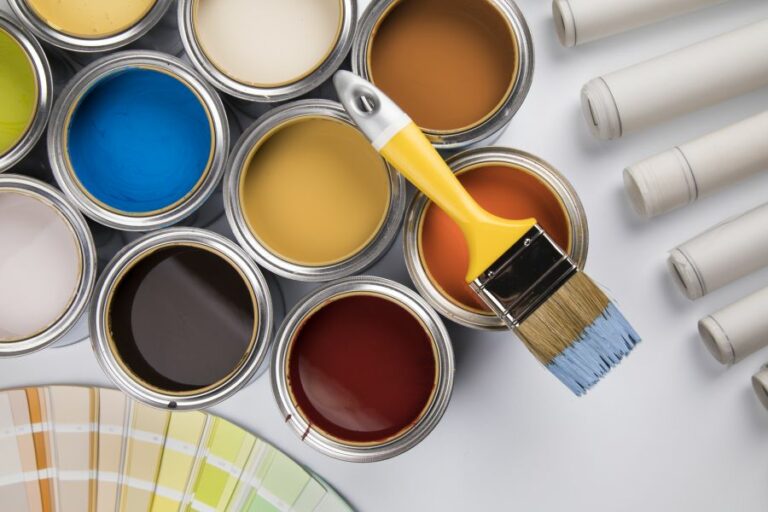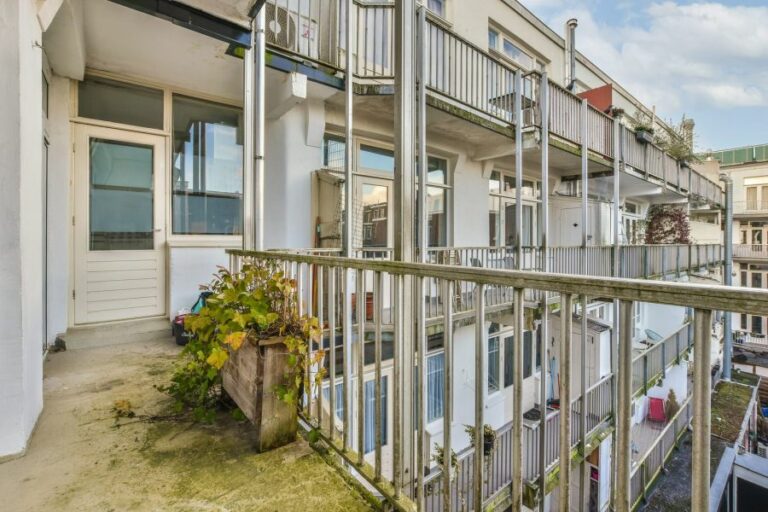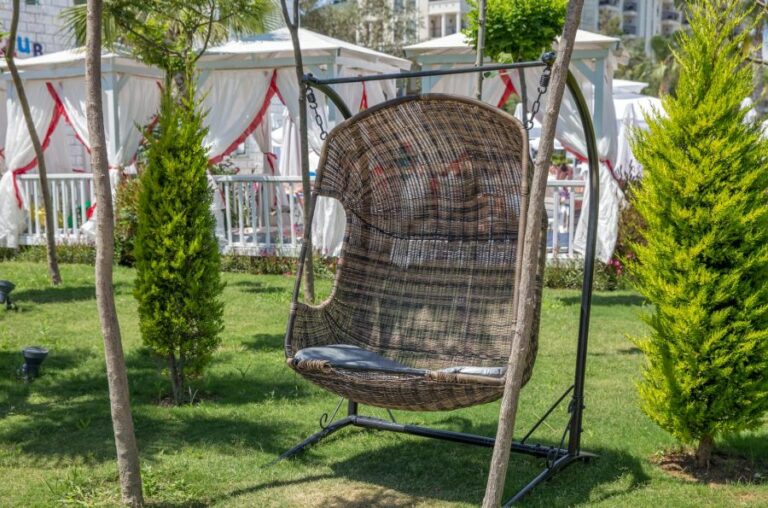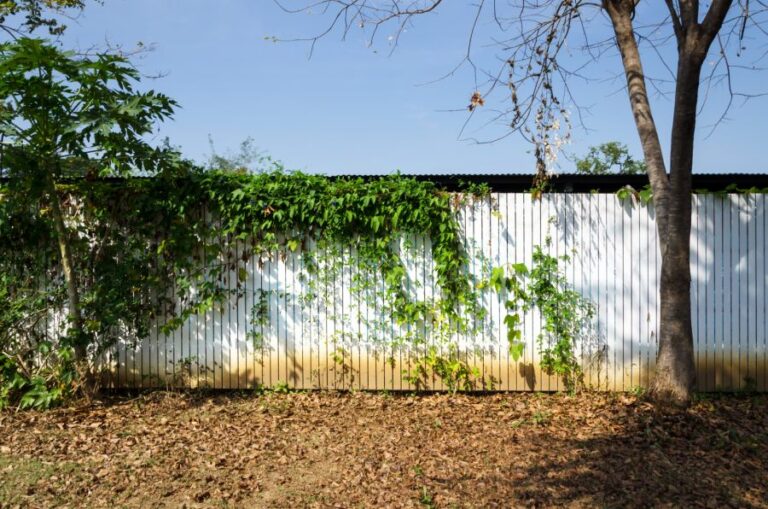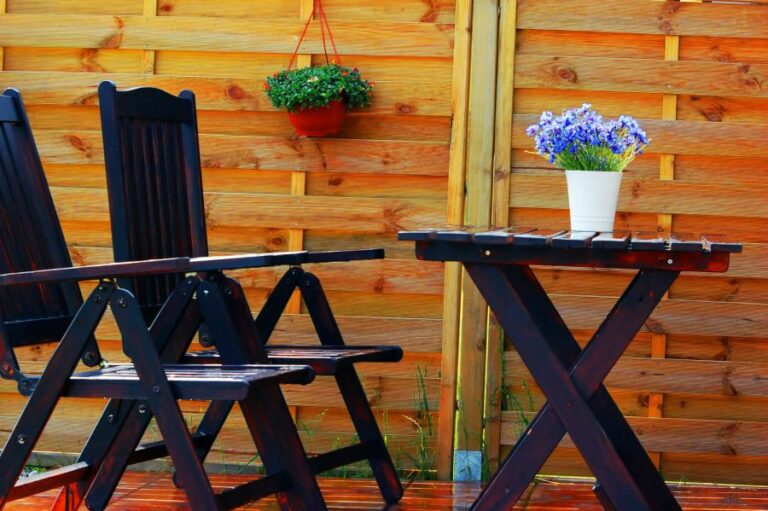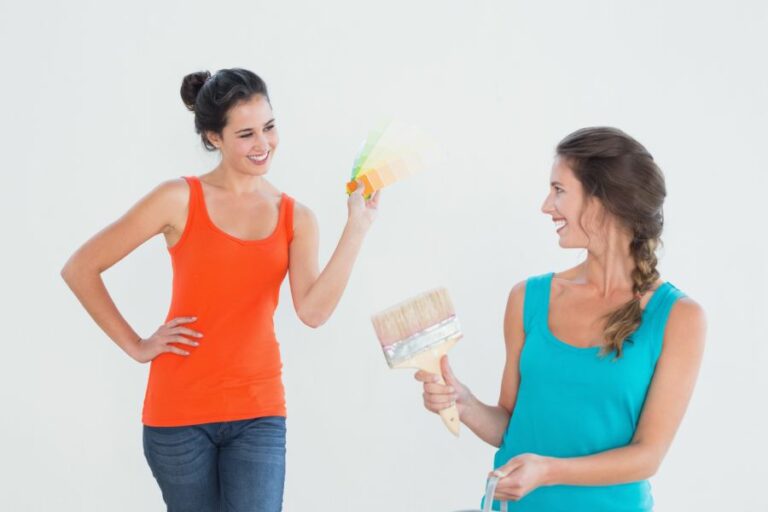Outdoor Gray Paint, 25 Things You Should Know
Are you looking to spruce up your exterior space with the perfect shade of outdoor gray paint but feeling overwhelmed by the vast array of options? I’m here to simplify the process and help you make the best decision for your home or outdoor project. With my in-depth knowledge and expertise, you can confidently breathe new life into your surroundings with the ideal gray color that not only impresses but also endures the test of time.
Outdoor gray paint:
Outdoor gray paint is a versatile and sophisticated choice for home exteriors, suitable for various architectural styles. Selecting the perfect shade depends on factors like undertones, lightness, and personal preferences. Additionally, choosing the right paint sheen and properly preparing your home’s exterior ensures a beautiful, durable, and timeless finish.

Looking to refresh your exterior with outdoor gray paint? Discover top color selections, expert tips on application and durability, and of course, the secret meanings behind various shades of gray. Read on for everything you need to know to make a stunning, lasting impression with your gray paint makeover.
Contents
- 1 Exterior Gray Paint Solution
- 2 What is the Most Widely Used Grey Paint Color for Exterior Surfaces?
- 3 Which Shade of Grey is Most Suitable for Exterior Walls?
- 4 Is the Grey Color Suitable for Exterior Design?
- 5 Which Shade of Grey Has the Highest Popularity?
Exterior Gray Paint Solution
Gray paint is a versatile and sophisticated option for the exterior of your home. It can blend with various architectural styles, making it suitable for contemporary, traditional, and industrial designs alike. With the array of gray shades available, it may be challenging to select the perfect one for your outdoor space.
• Gray Paint Undertones and Your Home’s Aesthetic
All grays have undertones that can range from warm to cool. These undertones can drastically affect the appearance of your paint, so it’s essential to choose a shade that will complement your home’s aesthetic.
– Warm Gray Undertones
Warm gray undertones can appear more beige or taupe, which provides a softer, more inviting look for your home’s exterior. These warm hues are ideal for traditional and rustic architectural styles.
For a neutral warm gray paint, consider Benjamin Moore Chelsea Gray. This shade pairs well with white trim and natural stone accents.
– Cool Gray Undertones
Cool gray undertones lean towards blue and green, giving off a sleek, modern vibe for your home. These colors can work well with contemporary and industrial designs.
A popular cool gray paint choice is Sherwin Williams Gauntlet Gray. This shade can create a striking contrast when paired with crisp white trim.
• Light vs. Dark Gray Outdoor Paint
The shade of gray you select can significantly impact the overall appearance of your home. Choosing between light and dark gray tones will depend on your home’s architectural style, surrounding environment, and personal preferences.
– Light Gray Paint for a Brighter, Larger Appearance
Light gray paint can create a brighter, more expansive appearance for your home. It is suitable for smaller homes or homes that tend to receive less natural light. Light grays are also more forgiving when it comes to dirt or imperfections on the exterior of your home.
A popular light gray paint option is Farrow and Ball’s Ammonite. This neutral shade looks beautiful on various home styles and pairs well with white or black trim.
– Dark Gray Paint for a Bold, Dramatic Effect
Dark gray paint can create a striking, bold effect for your home. It can also help showcase your home’s architectural details by providing a backdrop for contrasting trim and accents. However, dark grays may show more dirt and imperfections than lighter gray shades.
A recommended dark gray paint for a dramatic look is Behr’s Iron Mountain. This deep gray shade provides a rich, elegant appearance and pairs well with light-colored trim.
• Understanding Paint Sheens and Performance for Outdoor Use
Choosing the right paint sheen is essential to achieving the desired look and ensuring your outdoor gray paint lasts over time. Here is a breakdown of different paint sheens and their ideal applications:
– Flat / Matte Sheen
Flat or matte sheens provide a smooth, non-reflective finish, which can help conceal surface imperfections on your home’s exterior. However, flat finishes tend to be less durable and may be more difficult to clean.
– Satin / Low Luster Sheen
A satin or low-luster sheen offers a balance between durability and visual appeal, making it a popular choice for outdoor paint. Its subtle sheen provides a slight reflection without highlighting surface imperfections, and it is easier to clean than a flat sheen.
– Semi-Gloss Sheen
Semi-gloss sheens are more durable and easier to clean than satin sheens, providing better protection against moisture, mold, and mildew. They have a higher sheen than satin finishes, which may be more prone to highlighting imperfections.
• Preparing Your Home for Outdoor Gray Paint
Before applying your chosen gray paint, it is crucial to prepare your home’s exterior adequately. This process involves cleaning, patching, and priming the surfaces to ensure a smooth and long-lasting result.
- Clean: Pressure wash your home’s exterior to remove dirt, mold, and mildew. Allow the surface to dry thoroughly before proceeding.
- Patch and Repair: Inspect your home’s exterior for any cracks, holes, or damaged areas. Use an appropriate patching compound to repair these imperfections and let them dry fully.
- Prime: Apply a high-quality exterior primer to your home’s surfaces to ensure proper paint adhesion and coverage. For optimal results, use a primer that is specifically designed for your home’s substrate, such as wood, brick, or stucco.
Once your home’s exterior is prepared, you can begin applying your outdoor gray paint confidently. With the right shade, undertones, sheen, and proper preparation, your home will have a beautiful, durable, and timeless finish.
For more valuable tips and resources on painting and home improvement projects, visit This Old House.
What is the Most Widely Used Grey Paint Color for Exterior Surfaces?
Grey has become the go-to color for homeowners looking to make a sophisticated, modern statement with their home’s exterior. A neutral yet versatile choice, grey can make a home feel inviting, modern, and timeless all at once.
But with the wide range of shades and hues available, choosing the perfect exterior grey paint color can be a daunting task.
• Classic Grey Shades for Timeless Appeal
When it comes to exterior grey paint colors with timeless appeal, these classic shades rise to the top:
– Benjamin Moore – Chelsea Gray (HC-168)
This rich, warm gray has a subtle, earthy quality that works well on a variety of home styles, from traditional to modern. Its deep hue offers a dramatic contrast against white trim or lighter shades, creating a striking and elegant look.
I recommend Chelsea Gray for: Traditional homes, Colonial-style homes, and homes with brick or stone accents.
– Sherwin-Williams – Gauntlet Gray (SW 7019)
Gauntlet Gray is a versatile, mid-toned gray that provides a perfect balance between warm and cool undertones. This shade works well as a unifying color for exteriors with mixed materials, such as wood and stone. Its subtle depth creates a sophisticated yet inviting curb appeal.
I recommend Gauntlet Gray for: Craftsman-style homes, ranch-style homes, and homes with mixed materials.
– Farrow & Ball – Down Pipe (No. 26)
This deep, dark gray has a subtle blue undertone, making it an especially popular choice for coastal homes. Down Pipe provides a stunning contrast against crisp white trim, and it pairs beautifully with other cool-toned colors, such as slate blue and navy.
I recommend Down Pipe for: Beach or coastal-style homes, nautical-themed exteriors, and homes with slate or bluish accents.
• Light and Airy Grey Paint Colors for a Fresh, Modern Look
Many homeowners are drawn to lighter shades of grey for their ability to create a fresh, airy aesthetic. These popular exterior grey paint colors offer a modern, uplifting vibe:
– Benjamin Moore – Stonington Gray (HC-170)
Stonington Gray is a cool, light grey with a subtle blue undertone that adds a touch of sophistication to any exterior. Its crisp, clean appearance makes it an ideal choice for homeowners seeking a contemporary look, and it pairs well with virtually any accent color.
I recommend Stonington Gray for: Contemporary homes, mid-century modern homes, and homes with large windows or ample natural light.
– Sherwin-Williams – Repose Gray (SW 7015)
This light, warm grey has a soft, inviting quality that makes it a popular choice for various architectural styles. Repose Gray’s versatility allows it to work well with both warm and cool accent colors, offering a neutral backdrop for landscaping and other exterior features.
I recommend Repose Gray for: Traditional homes, transitional homes, and homes with warm or earthy accents.
– Behr – Silver Drop (790C-2)
Silver Drop is a soft, pale gray that leans towards the cooler side of the spectrum. Its airy quality creates a fresh, modern look that works especially well on homes with clean lines and minimal detailing.
I recommend Silver Drop for: Contemporary homes, minimalist-style homes, and homes with glass or metal accents.
• Tips for Choosing the Perfect Exterior Grey Paint Color
Now that you’re familiar with some of the most popular exterior grey paint colors, it’s time to consider how to choose the perfect shade for your home. Here are a few tips to guide you through the process:
- Consider your home’s architectural style. Some grey shades are better suited to certain architectural styles, as mentioned in our recommendations above. Take cues from your home’s design and select a grey color that enhances its features and overall aesthetic.
- Factor in your home’s surrounding environment. Choosing a grey paint color that harmonizes with your home’s surroundings can create a cohesive and visually pleasing appearance. Observe the colors and materials found in your neighborhood, as well as any natural features like trees or nearby bodies of water.
- Test before committing. Paint colors can appear differently on various surfaces and under different lighting conditions, so it’s essential to test your chosen color on your home’s exterior before committing. Purchase a small sample, paint a patch on your home, and observe the color throughout the day to ensure it’s the right fit.
- Consult a professional. If you’re still struggling to choose the perfect grey paint color, consider consulting a professional. Many paint stores offer color consultations and can provide expert guidance based on your home’s specific needs and style.
For more information on choosing the perfect exterior paint color for your home, visit the Paint Quality Institute, an educational organization that provides homeowners with expert advice on selecting and using paint.
Which Shade of Grey is Most Suitable for Exterior Walls?
Grey is a versatile, timeless, and sophisticated color choice for exterior walls. With endless variations in tones, hues, and shades, selecting the right grey can be a daunting task.
• Understanding the Different Tones of Grey
Grey is a neutral color that can create a variety of moods depending on its undertone. Understanding the undertone of the color that lies beneath the grey is essential to select the best shade for your exterior walls.
– Warm Greys
Warm greys have undertones of red, yellow, or brown, creating a rich and inviting look. These shades work well in regions with colder climates, as they provide a cozy and welcoming ambiance.
Recommended Warm Greys:
- Sherwin Williams Urban Bronze (SW 7048)
- Benjamin Moore Kendall Charcoal (HC-166)
- Farrow & Ball Downpipe (26)
– Cool Greys
Cool greys have undertones of blue, green, or purple, which bring a fresh and crisp appearance to your exterior walls. They work well in areas with warmer climates, as they help create an illusion of coolness.
Recommended Cool Greys:
- Sherwin Williams Gray Screen (SW 7071)
- Benjamin Moore Gray Owl (OC-52)
- Farrow & Ball Pavilion Gray (242)
– Neutral Greys
Neutral greys, also known as pure greys or true greys, have no undertone color. These shades exude elegance and sophistication, making them suitable for any climate and architectural style.
Recommended Neutral Greys:
- Sherwin Williams Repose Gray (SW 7015)
- Benjamin Moore Chelsea Gray (HC-168)
- Farrow & Ball Ammonite (274)
• Complementing Architectural Styles and Elements
Different shades of grey complement different architectural styles and elements.
– Traditional Homes
For traditional homes, such as Colonial, Victorian, or Craftsman, a warm or neutral grey is often preferred. These greys add depth and character to architectural details, and they blend well with the brick, wood, or stone elements found in traditional homes.
– Contemporary Homes
In contrast, cool greys pair well with the clean lines and minimalistic design of contemporary homes. They emphasize the sleek, modern appearance and blend well with metal, glass, or concrete features.
– Accent Colors
When selecting the best grey for your exterior walls, consider how it will work with other accent colors present in your house, such as the door, window trim, or shutters. Some popular combinations include:
- Grey and white: This classic pairing exudes sophistication and timeless elegance.
- Grey and black: For a bold, modern look, incorporate black accents with grey.
- Grey and yellow: A pop of yellow against a grey backdrop creates a lively, cheerful look.
• Assessing the Surrounding Environment
The best grey for your exterior walls may also depend on the surrounding environment. Consider the following factors when making your decision:
– Regional Climate
The regional climate can significantly impact the perception of a grey color. Warm greys work well in colder climates, while cool greys are more suitable for warmer areas.
– Landscape and Neighborhood
Make sure to assess your neighborhood’s color palette and landscape to choose a grey that harmoniously blends with its surroundings. For instance, a coastal environment may call for a cool grey with a blue undertone.
– Sunlight Exposure
The color of your exterior walls may appear different under varying natural light conditions. It’s advised to test the paint swatches on different areas of your house to see how they look at different times of the day and under natural light.
• Test Before Committing
To ensure you’ve chosen the perfect grey for your exterior walls, it’s always a good idea to test a small patch on your house before fully committing. Paint a sizeable swatch and observe it at different times during the day to see how the color appears under natural light.
In conclusion, the best grey for your exterior walls depends on various factors such as undertone, architectural style, climate, and surrounding environment. By understanding these aspects and testing your chosen shade, you can create a stunning and sophisticated exterior that will stand the test of time.
For further information on choosing exterior paint colors, you can visit the U.S. Department of Energy’s guide to selecting paint colors.
Grey Shade Name | Description |
|---|---|
Light Grey | A soft, light shade of grey that creates a subtle and elegant appearance. |
Charcoal Grey | A dark, bold shade of grey that adds drama and sophistication to an exterior. |
Warm Grey | A grey with warm undertones that complements natural materials and creates a welcoming atmosphere. |
Cool Grey | A grey with cool undertones that creates a sleek, modern appearance. |
Blue-Grey | A grey with a hint of blue that adds depth and character to an exterior. |
Is the Grey Color Suitable for Exterior Design?
• Understanding Grey as a Color Choice
Grey is a neutral and versatile color, often associated with elegance, sophistication, and modernity. It is a popular choice for both interior and exterior design because of its ability to blend well with other colors while providing a sense of balance and stability.
Grey is also considered a timeless and classic color that does not go out of style easily.
– The Psychology of Grey
The color grey has a psychological impact on people’s perception of a space, as it portrays a sense of calmness and neutrality. Grey is often associated with professionalism, formality, and efficiency, making it a suitable choice for commercial buildings or establishments that aim to portray these qualities.
According to some research, grey color can help reduce stress and anxiety, making it an ideal choice for creating a relaxing ambiance in a home or commercial space.
You can refer to the American Psychological Association’s article about the significance of color in our perception and emotions for more details.
• Advantages of Grey Exterior
There are several advantages to choosing grey for your exterior color that make it a popular option for many property owners.
– Aesthetics and Versatility
Grey exterior paint can complement various architectural styles, from traditional to modern designs. Its versatility allows property owners to choose from a wide range of shades, from light grey to dark, moody tones. This flexibility makes it easy to create the desired look and feel for your property.
– Timelessness and Low Maintenance
Grey is a classic and timeless color that does not go out of trend quickly, ensuring that your property remains visually appealing for years. Additionally, grey is a low-maintenance color that does not show dirt and stains easily, reducing the need for frequent cleaning or repainting.
– Easy Coordination with Other Colors
Grey’s neutral characteristic makes it a perfect base for adding other colors in decorations, landscaping, or architectural elements. It allows other colors to pop without clashing or overpowering the overall design.
– Increased Property Value
A well-chosen grey paint can potentially increase a property’s value, especially if it makes the building look more modern and sophisticated. It gives the impression of a well-maintained and stylish property, which can be attractive to potential buyers or tenants.
• Factors to Consider When Choosing Grey for Exterior
Despite the numerous benefits of grey exterior paint, there are some factors to consider before making a decision.
– Climate and Geography
The surrounding climate and geography can affect the appearance of grey paint on your property’s exterior. In areas with abundant sunlight, light grey shades might appear too bright, while darker shades of grey can absorb heat and make your property feel warmer.
Consider the local climate before deciding on the shade of grey to use.
– Building Material Compatibility
Grey paint may not be suitable for all types of building materials. For instance, red brick may not blend well with grey paint, so it is essential to consider the compatibility of grey paint with your property’s building materials.
– Size and Architectural Features
The size of your property and its architectural features play a crucial role in determining the best shade of grey for the exterior. Dark grey tones might make a small property appear smaller, while light grey shades could accentuate the size of a larger property.
Evaluate your property’s unique features before settling on a particular shade of grey.
• Tips for Choosing the Perfect Grey for Your Exterior
Here are some recommendations based on personal experience when selecting the ideal grey paint for your exterior:
- Obtain paint samples and test them on different areas of your exterior to see how the color appears under various lighting conditions and against your building materials.
- Consult with a professional designer or color consultant to help you make an informed decision on the best grey shade for your property.
- Consider your property’s surroundings and neighboring properties to ensure your grey exterior paint complements the overall landscape and does not clash with other buildings.
In conclusion, grey is an excellent color choice for an exterior, thanks to its versatility, aesthetics, and low-maintenance qualities.
By carefully considering factors such as climate, building materials, and architectural features, you can select the perfect grey shade for your property’s exterior, potentially enhancing its value and appeal.
Which Shade of Grey Has the Highest Popularity?
Grey, a timeless and versatile color that never goes out of style, has taken the design world by storm in recent years.
Ranging from warm taupes to cool charcoals, grey has proven to be a popular choice for both interior designers and homeowners alike. But with so many shades of grey to choose from, which one reigns supreme?
• The Winning Shade: Revere Pewter
According to various design publications and industry experts, the most popular shade of grey is Revere Pewter (HC-172) by Benjamin Moore. This warm grey, with its subtle balance of beige and light grey, has been praised for its versatility and ability to create a welcoming and calming atmosphere in any space.
Designed to work harmoniously with various lighting conditions, Revere Pewter is a favorite among those looking for a neutral shade that can adapt to its surroundings.
The color is also known for its ability to make a room feel both cozy and expansive, making it a great choice for common areas like living and dining rooms.
– Expert Tips for Incorporating Revere Pewter
To make the most out of Revere Pewter, consider these expert tips when incorporating the shade into your home:
- Set the mood. Revere Pewter is an excellent option for those looking to create a calm and tranquil environment. Consider using this shade in spaces where you want to promote relaxation and comfort, such as bedrooms or living rooms.
- Coordinate with complementary colors. Revere Pewter works beautifully with a variety of colors, including warm neutrals, earth tones, and even muted blues or greens. Experiment with these complementary colors to create a cohesive and visually appealing design.
- Consider lighting. In order to enhance the adaptability of Revere Pewter, pay close attention to the lighting in your space. Natural light will bring out the warmer, beige tones, while artificial lighting may highlight the cooler, grey undertones.
- Add depth and dimension. To create a more dynamic design, try incorporating various shades of grey throughout your space. Mix Revere Pewter with darker shades, like charcoal or slate, for added depth and dimension.
– Personal Recommendations for Using Revere Pewter
Having worked with Revere Pewter on numerous projects, I can wholeheartedly recommend this shade for a variety of spaces. Here are some of our personal recommendations for using Revere Pewter in your home:
- In kitchens or bathrooms, Revere Pewter pairs beautifully with crisp white cabinetry and countertops, resulting in a clean and contemporary look.
- For bedrooms, consider using Revere Pewter on the walls and incorporating soft, plush linens in complementary colors for a cozy and inviting sleeping space.
- In living areas, experiment with adding pops of color through artwork, throw pillows, or decorative accessories. This will create a visually interesting contrast against the neutral backdrop of Revere Pewter.
- Set the stage for an inviting entryway by painting your front door in a bold, contrasting color like navy blue or burgundy. This will create a striking focal point against the backdrop of Revere Pewter’s walls.
• Additional Resources for Learning About Grey
Want to learn even more about the many shades of grey and how to incorporate them into your space? Consider checking out The Color Catalog/, a comprehensive resource provided by the National Park Service that offers in-depth information on color theory and its applications in interior design.
• Conclusion
In conclusion, Revere Pewter by Benjamin Moore stands out as the most popular shade of grey among both design experts and homeowners alike. With its warm undertones and versatile nature, Revere Pewter is the ideal choice for those looking to create a calming and cohesive space.
By following expert tips and personal recommendations, you can successfully incorporate this shade of grey into your home to achieve a timeless and stylish aesthetic.

